Abstract
Normally capable adults learned two-choice identity matching of three-digit numerals and arbitrary matching of physically dissimilar nonsense syllables. The stimuli were displayed on a computer terminal, and responses consisted of typing on the terminal's keyboard. In Experiment 1, every trial displayed a sample numeral, a comparison numeral, and three equal signs (= = =). The comparison stimulus was to be selected if it was identical with the sample; otherwise the equal sign was to be selected. This "single comparison" method was then used to show that arbitrary matching could be based upon either sample-S+ or sample-S- relations. In Experiment 2, a series of probe trials displayed a novel sample, a comparison stimulus from the arbitrary matching baseline, and = = =. Subjects typically selected = = =; they apparently were excluding the baseline comparison stimulus. Experiments 3 through 5 investigated which variables in training would lead to the selection of baseline comparison stimuli in response to novel samples. Behavior was usually unchanged when baseline training included relating comparison stimuli to as many as four different samples. Punishment contingencies were effective, but performance did not generalize unless those contingencies were applied in relation to more than one baseline comparison stimulus.
Full text
PDF
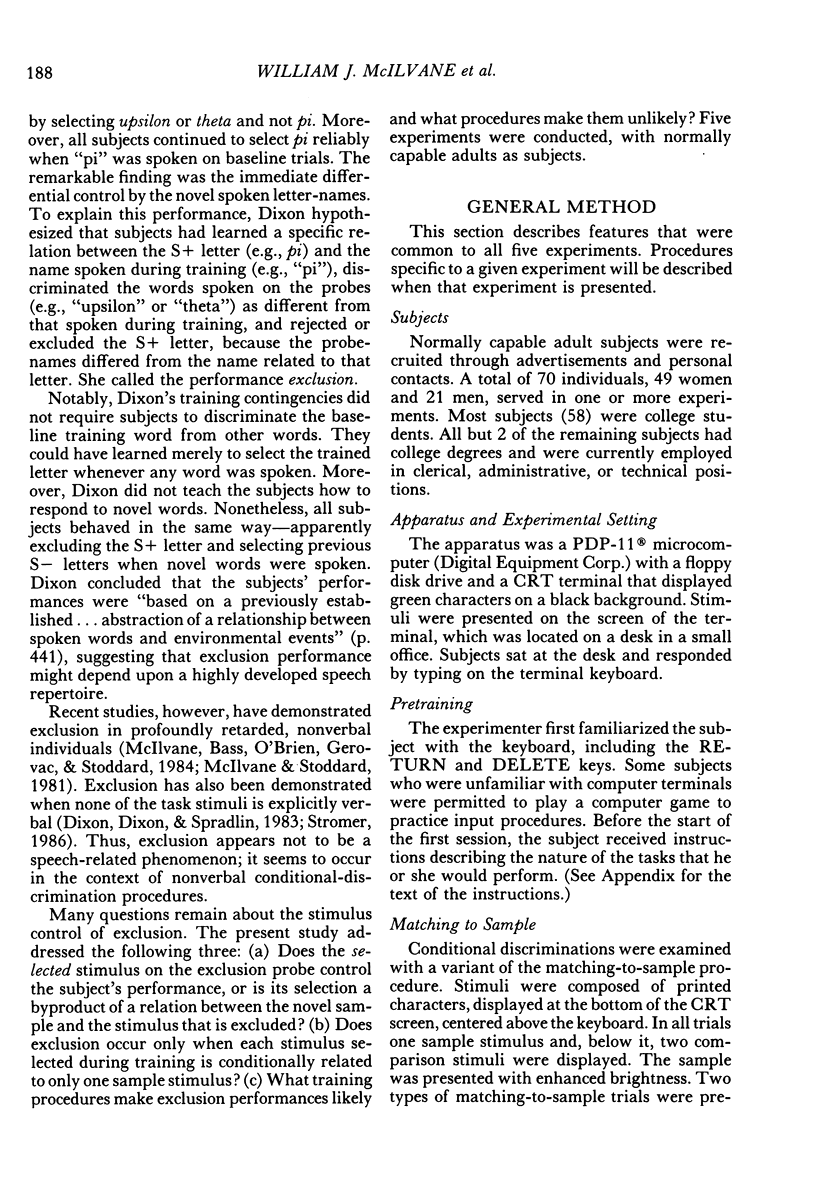




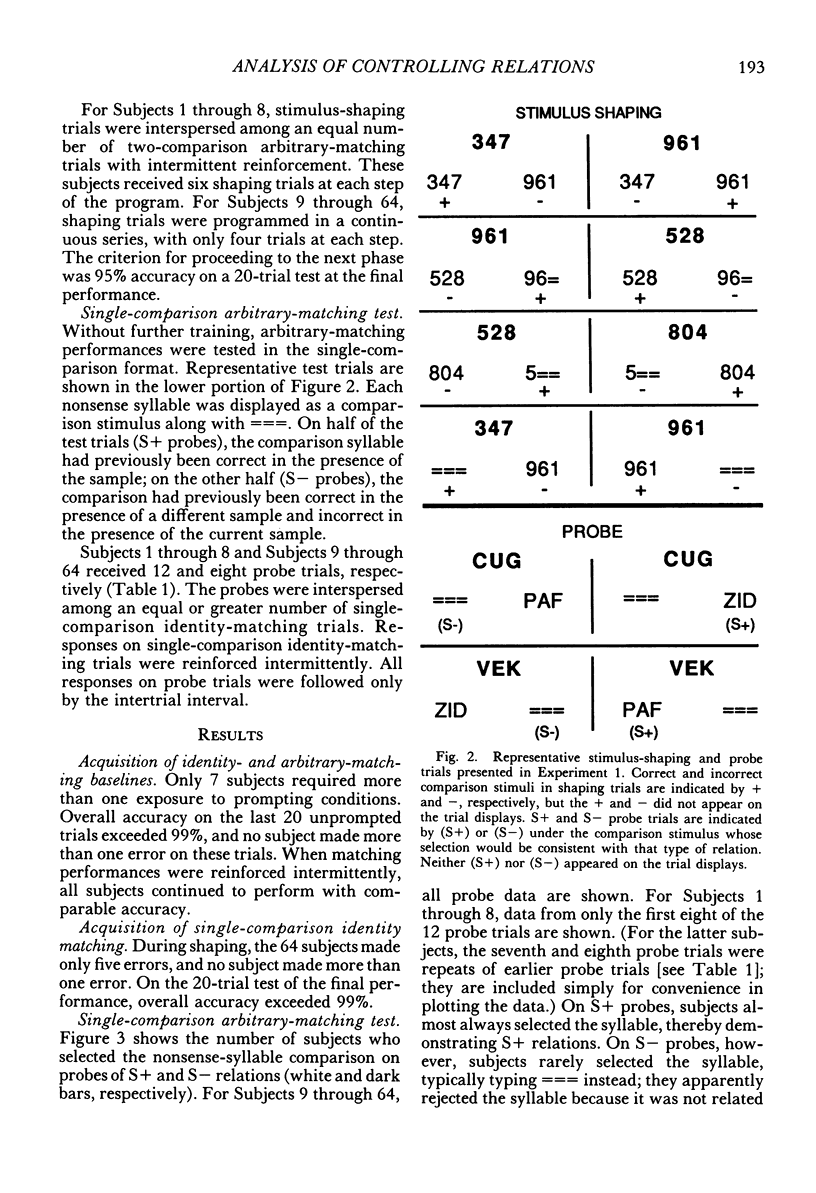

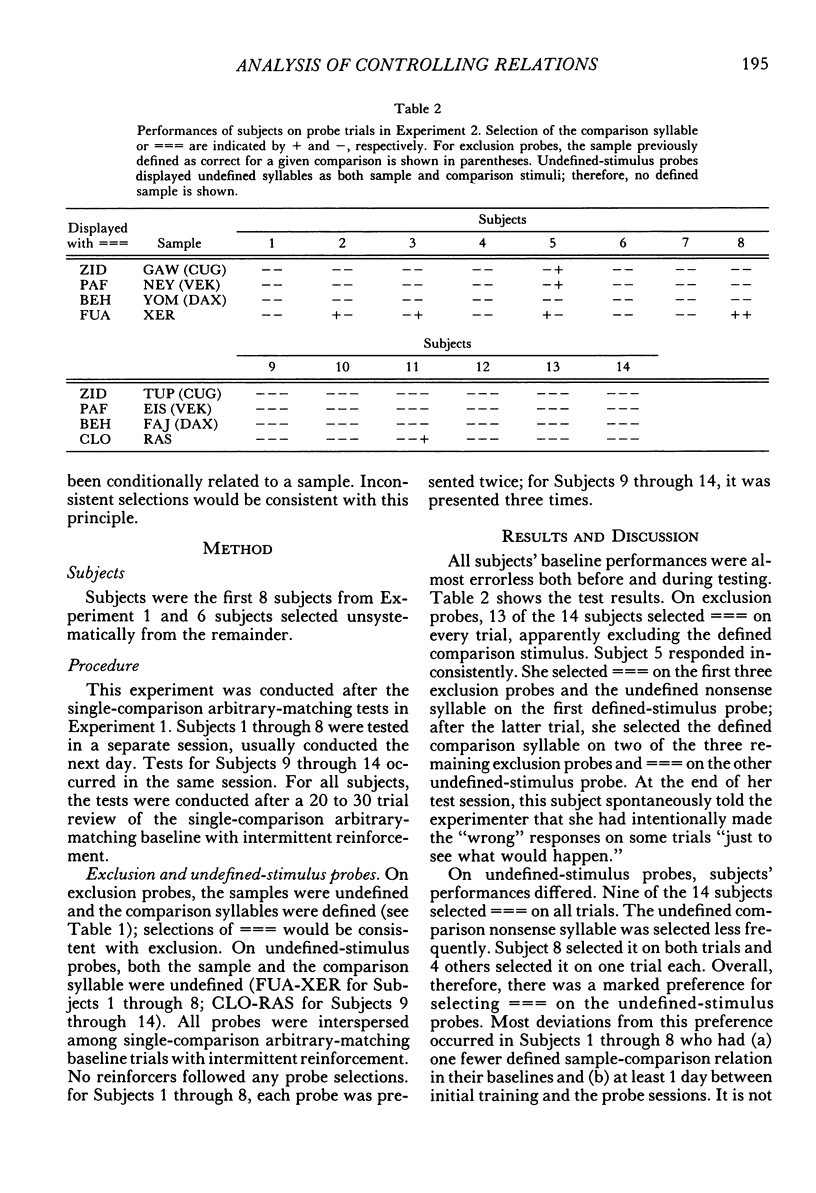
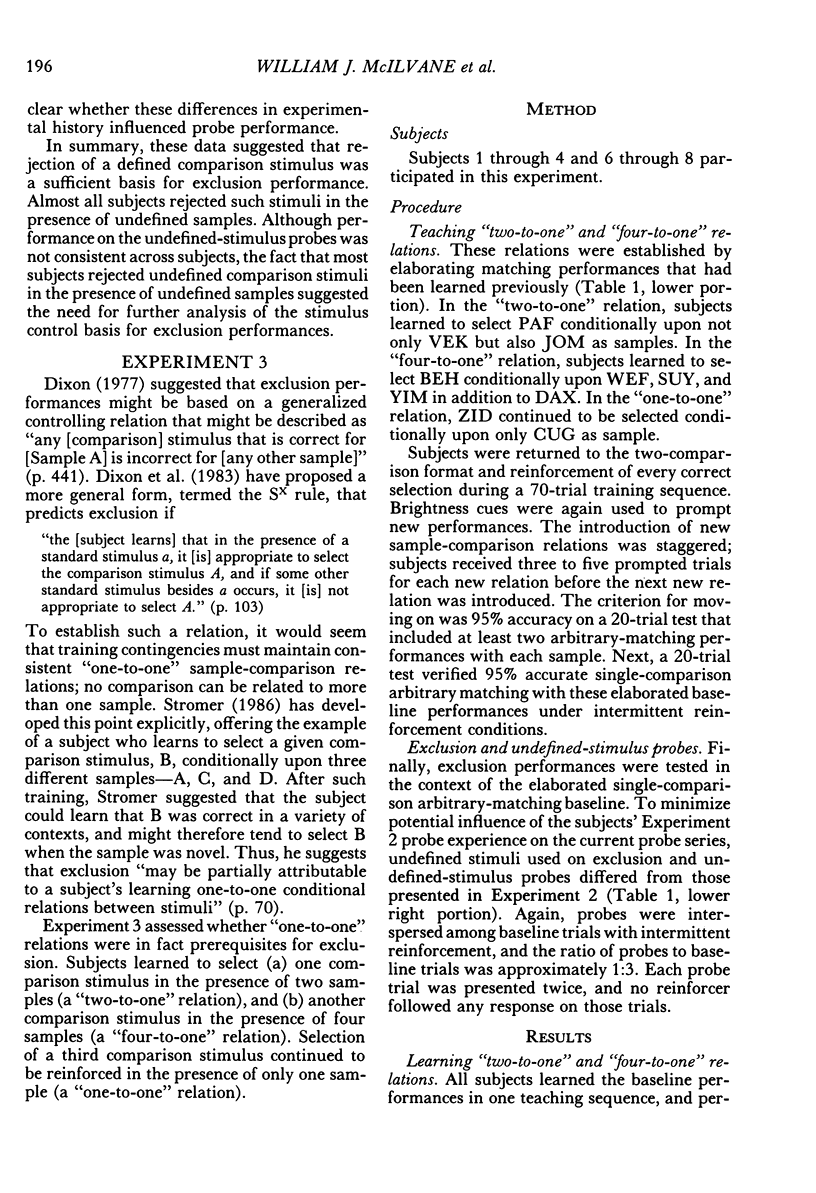

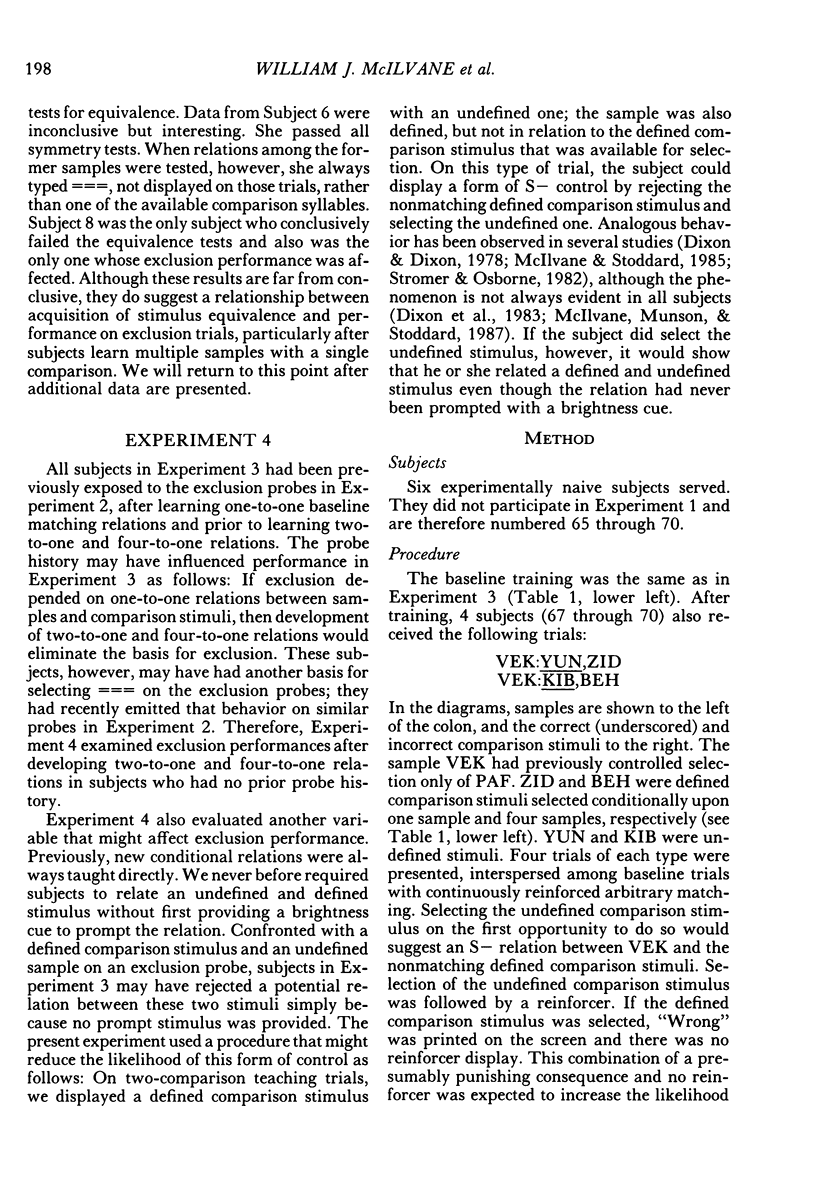
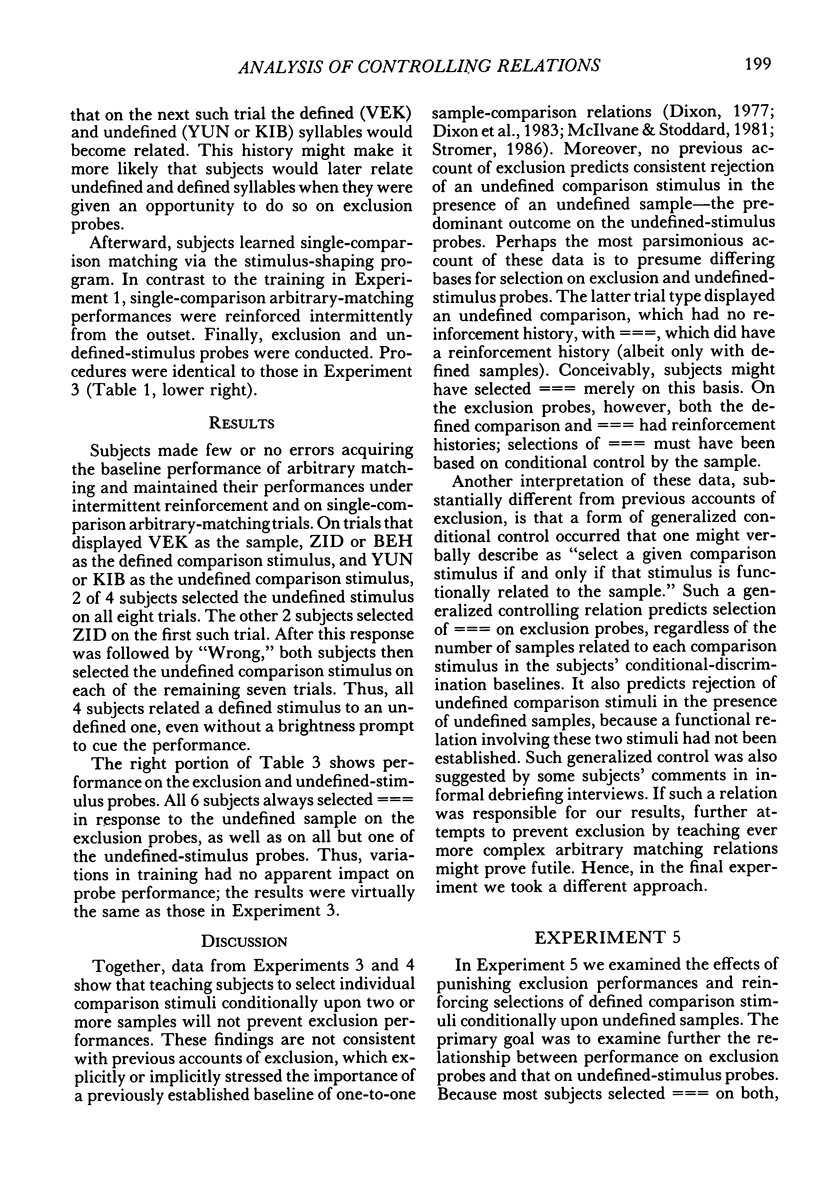

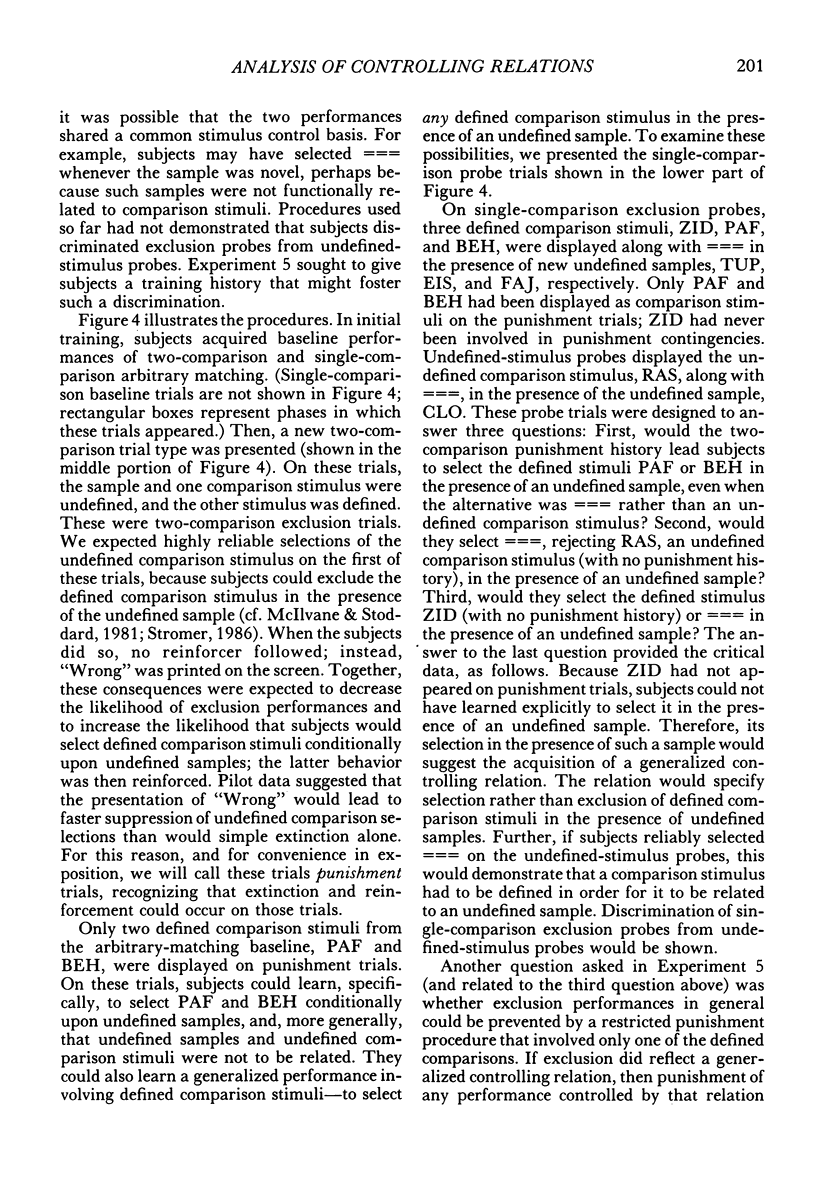

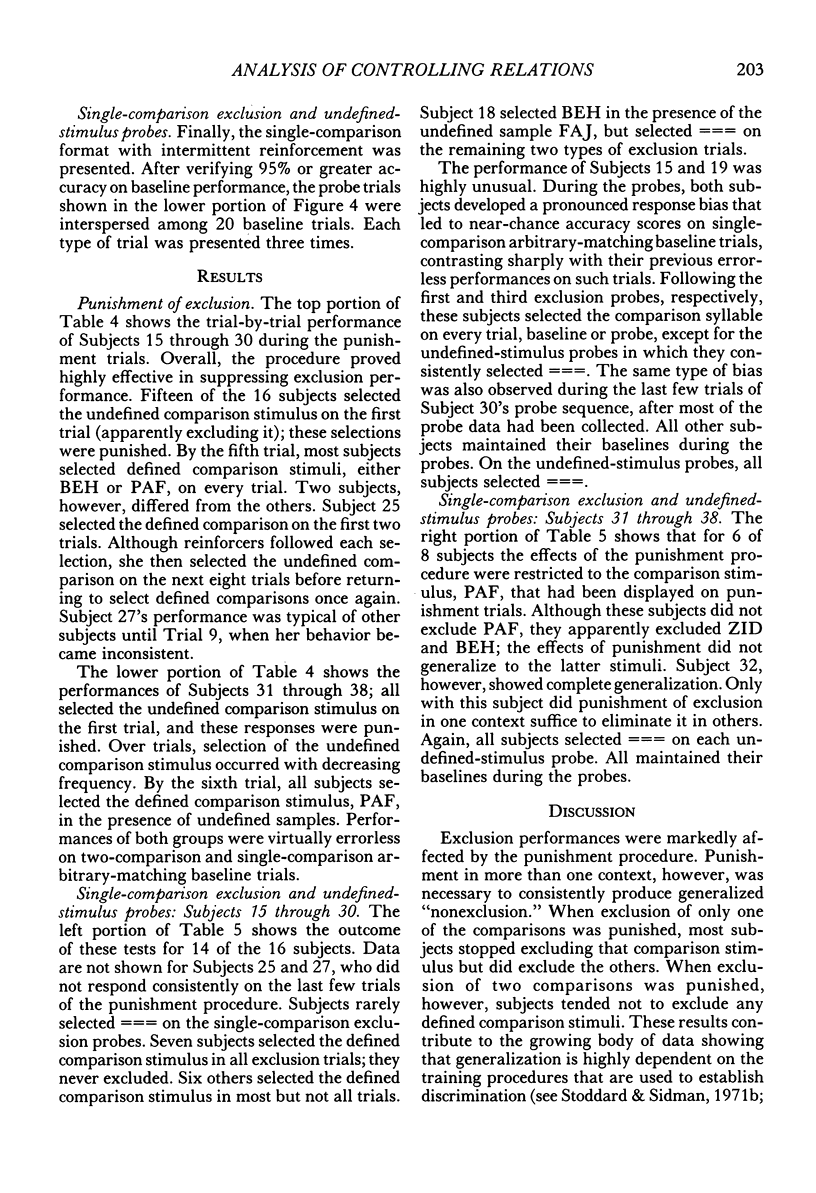

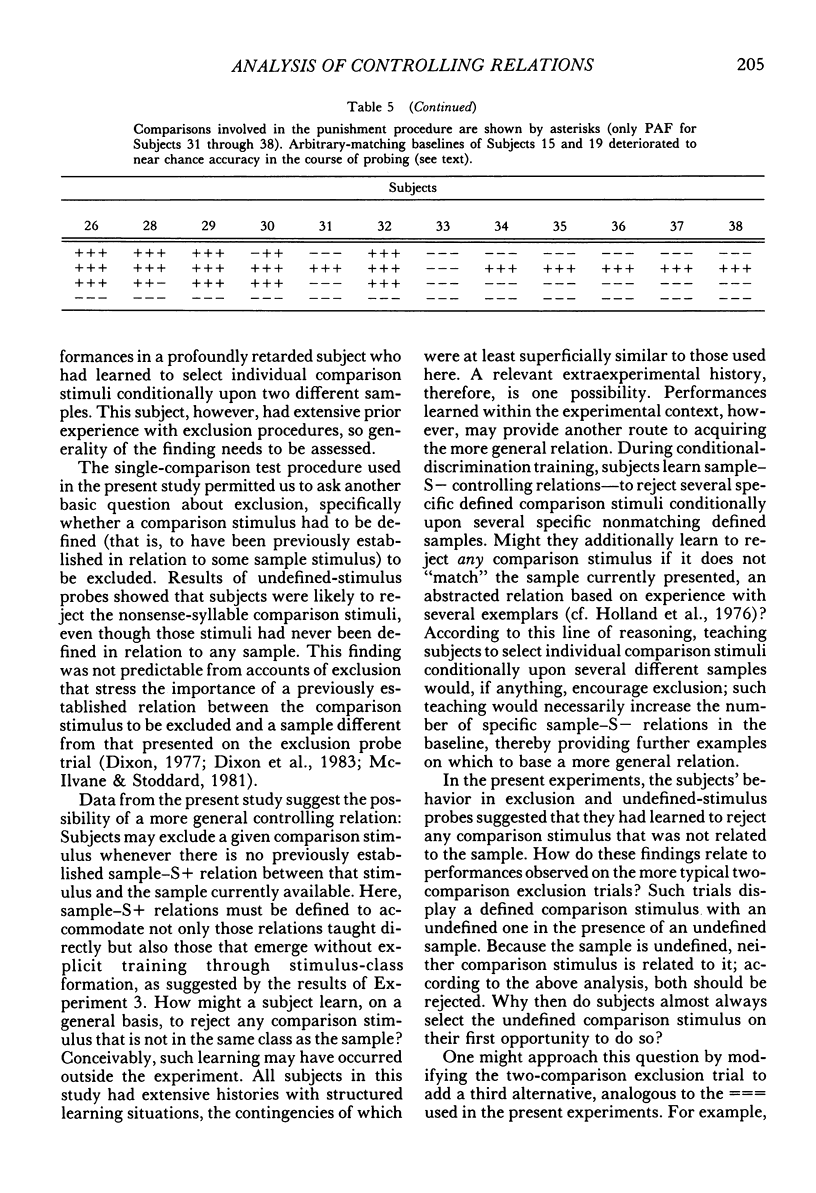

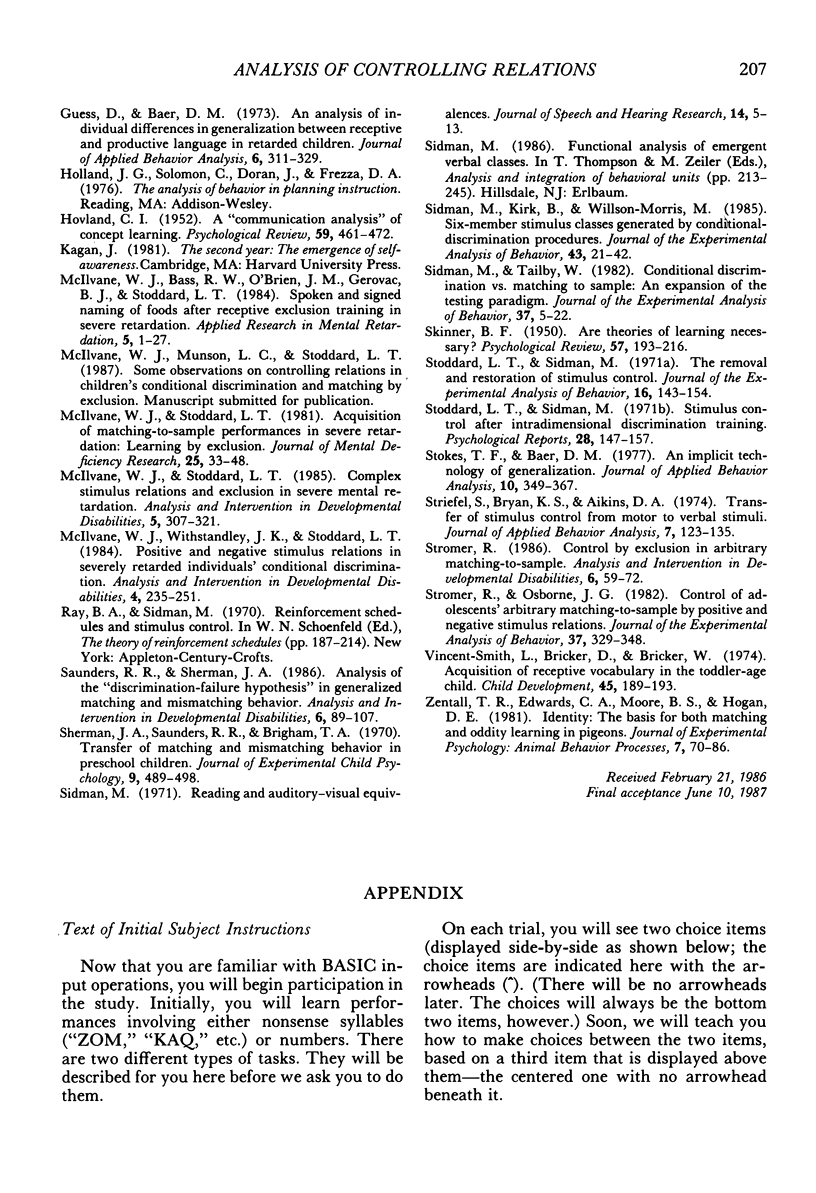

Selected References
These references are in PubMed. This may not be the complete list of references from this article.
- Baer D. M., Peterson R. F., Sherman J. A. The development of imitation by reinforcing behavioral similarity to a model. J Exp Anal Behav. 1967 Sep;10(5):405–416. doi: 10.1901/jeab.1967.10-405. [DOI] [PMC free article] [PubMed] [Google Scholar]
- Carter D. E., Werner T. J. Complex learning and information processing by pigeons: a critical analysis. J Exp Anal Behav. 1978 May;29(3):565–601. doi: 10.1901/jeab.1978.29-565. [DOI] [PMC free article] [PubMed] [Google Scholar]
- D'Amato M. R., Salmon D. P., Colombo M. Extent and limits of the matching concept in monkeys (Cebus apella). J Exp Psychol Anim Behav Process. 1985 Jan;11(1):35–51. doi: 10.1037//0097-7403.11.1.35. [DOI] [PubMed] [Google Scholar]
- Dixon L. S. The nature of control by spoken words over visual stimulus selection. J Exp Anal Behav. 1977 May;27(3):433–442. doi: 10.1901/jeab.1977.27-433. [DOI] [PMC free article] [PubMed] [Google Scholar]
- Dixon M. H., Dixon L. S. The nature of standard control in children's matching-to-sample. J Exp Anal Behav. 1978 Sep;30(2):205–212. doi: 10.1901/jeab.1978.30-205. [DOI] [PMC free article] [PubMed] [Google Scholar]
- Farthing G. W., Opuda M. J. Transfer of matching-to-sample in pigeons. J Exp Anal Behav. 1974 Mar;21(2):199–213. doi: 10.1901/jeab.1974.21-199. [DOI] [PMC free article] [PubMed] [Google Scholar]
- Guess D., Baer D. M. An analysis of individual differences in generalization between receptive and productive language in retarded children. J Appl Behav Anal. 1973 Summer;6(2):311–329. doi: 10.1901/jaba.1973.6-311. [DOI] [PMC free article] [PubMed] [Google Scholar]
- HOVLAND C. I. A communication analysis of concept learning. Psychol Rev. 1952 Nov;59(6):461–472. doi: 10.1037/h0058490. [DOI] [PubMed] [Google Scholar]
- McIlvane W. J., Bass R. W., O'Brien J. M., Gerovac B. J., Stoddard L. T. Spoken and signed naming of foods after receptive exclusion training in severe retardation. Appl Res Ment Retard. 1984;5(1):1–27. doi: 10.1016/s0270-3092(84)80016-8. [DOI] [PubMed] [Google Scholar]
- McIlvane W. J., Stoddard T. Acquisition of matching - to - sample performances in severe retardation: learning by exclusion. J Ment Defic Res. 1981 Mar;25(Pt 1):33–48. doi: 10.1111/j.1365-2788.1981.tb00091.x. [DOI] [PubMed] [Google Scholar]
- SKINNER B. F. Are theories of learning necessary? Psychol Rev. 1950 Jul;57(4):193–216. doi: 10.1037/h0054367. [DOI] [PubMed] [Google Scholar]
- Sidman M., Kirk B., Willson-Morris M. Six-member stimulus classes generated by conditional-discrimination procedures. J Exp Anal Behav. 1985 Jan;43(1):21–42. doi: 10.1901/jeab.1985.43-21. [DOI] [PMC free article] [PubMed] [Google Scholar]
- Sidman M. Reading and auditory-visual equivalences. J Speech Hear Res. 1971 Mar;14(1):5–13. doi: 10.1044/jshr.1401.05. [DOI] [PubMed] [Google Scholar]
- Sidman M., Tailby W. Conditional discrimination vs. matching to sample: an expansion of the testing paradigm. J Exp Anal Behav. 1982 Jan;37(1):5–22. doi: 10.1901/jeab.1982.37-5. [DOI] [PMC free article] [PubMed] [Google Scholar]
- Stoddard L. T., Sidman M. Stimulus control after intradimensional discrimination training. Psychol Rep. 1971 Feb;28(1):147–157. doi: 10.2466/pr0.1971.28.1.147. [DOI] [PubMed] [Google Scholar]
- Stoddard L. T., Sidman M. The removal and restoration of stimulus control. J Exp Anal Behav. 1971 Sep;16(2):143–154. doi: 10.1901/jeab.1971.16-143. [DOI] [PMC free article] [PubMed] [Google Scholar]
- Stokes T. F., Baer D. M. An implicit technology of generalization. J Appl Behav Anal. 1977 Summer;10(2):349–367. doi: 10.1901/jaba.1977.10-349. [DOI] [PMC free article] [PubMed] [Google Scholar]
- Striefel S., Bryan K. S., Aikins D. A. Transfer of stimulus control from motor to verbal stimuli. J Appl Behav Anal. 1974 Spring;7(1):123–135. doi: 10.1901/jaba.1974.7-123. [DOI] [PMC free article] [PubMed] [Google Scholar]
- Stromer R., Osborne J. G. Control of adolescents' arbitrary matching-to-sample by positive and negative stimulus relations. J Exp Anal Behav. 1982 May;37(3):329–348. doi: 10.1901/jeab.1982.37-329. [DOI] [PMC free article] [PubMed] [Google Scholar]
- Vincent-Smith L., Bricker D., Bricker W. Acquisition of receptive vocabulary in the toddler-age child. Child Dev. 1974 Mar;45(1):189–193. [PubMed] [Google Scholar]


